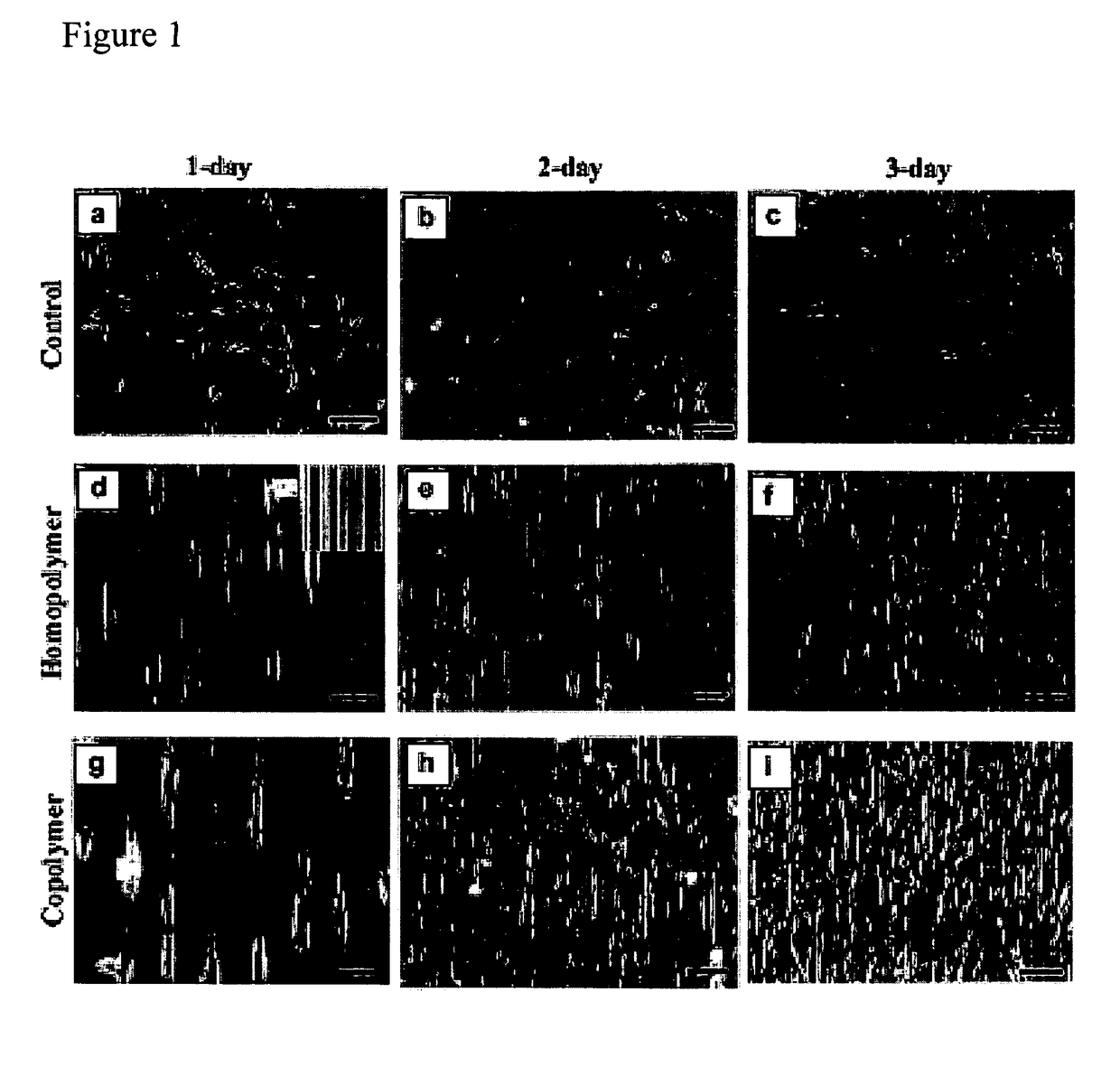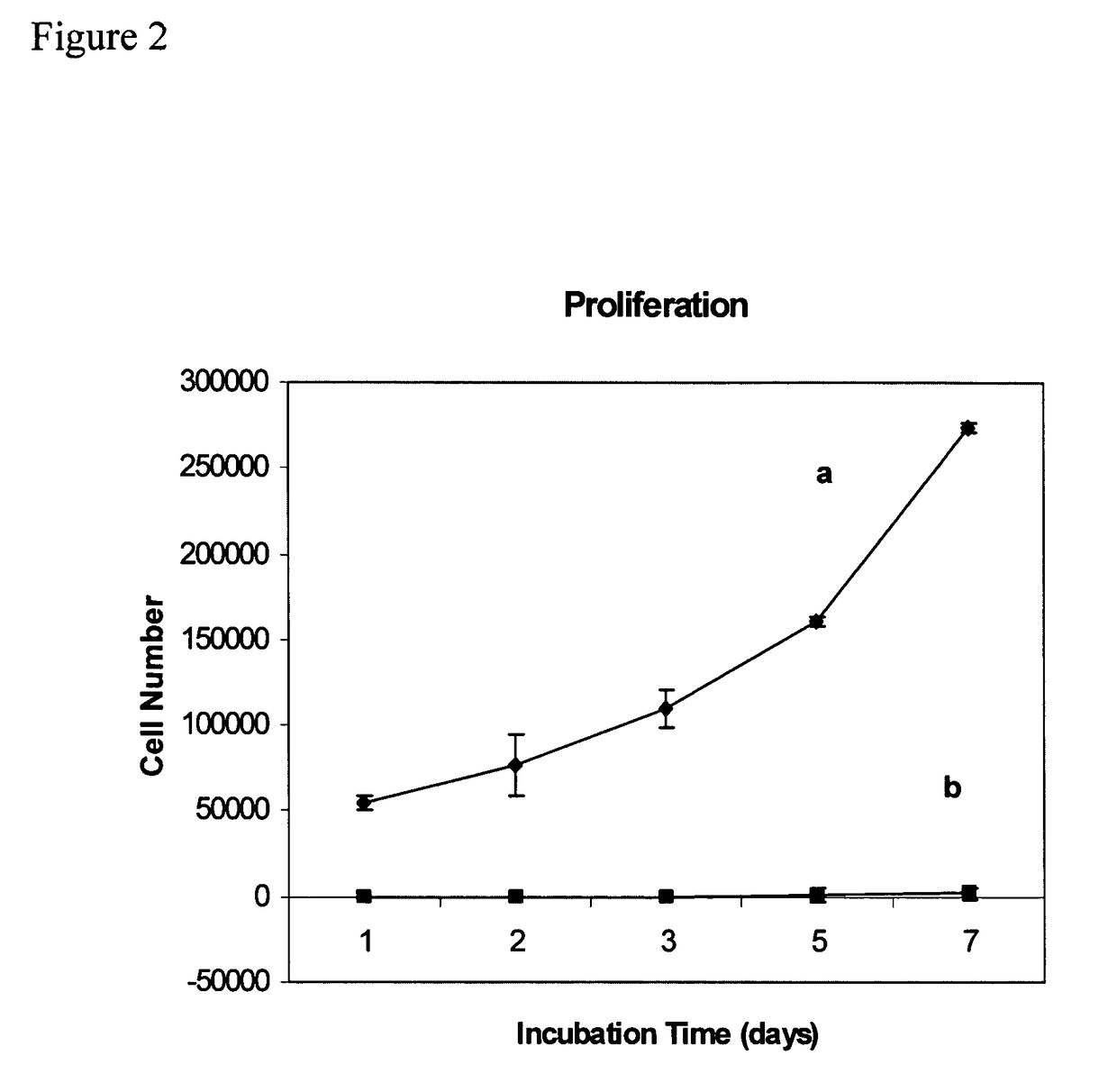Biocompatible resists
a biocompatible and resist technology, applied in the field of tissue engineering and biomaterials, can solve problems such as denaturation of biomolecules and cells
- Summary
- Abstract
- Description
- Claims
- Application Information
AI Technical Summary
Benefits of technology
Problems solved by technology
Method used
Image
Examples
example 1
General Details, Starting Materials, and Characterization Methods
[0354]Materials. N-Vinyl-2-pyrrolidone (NVP), t-butyl methacrylate (tBMA), and methyl methacrylate (MMA) were purchased from Aldrich Chemical Company (Milwaukee, Wis.) and distilled prior to use. N,N′-Azobisisobutyronitrile (AIBN) was obtained from Aldrich and purified by recrystallization from methanol. Triphenylsulfonium triflate (TPSTf) (used as a photoacid generator (PAG)) was purchased from Aldrich Chemical Company and used as received. Other photoacid generating groups (PAG) that could be used in this invention include, but are not limited to, triphenylsulfonium hexafluoroantimonate, triphenylsulfonium triflate, or a combination thereof.
[0355]Polymer Characterization. The synthetic polymers disclosed herein were characterized by gel permeation chromatography (GPC) (for molecular weight measurements); 1H and 13C nuclear magnetic resonance (NMR) and Fourier transform infrared spectroscopy (FTIR) (for chemical struc...
example 2
Preparation of the olefinic monomer 3-(t-butoxycarbonyl)-N-vinyl-2-pyrrolidone (TBNVP)
[0358]The monomer 3-(t-butoxycarbonyl)-N-vinyl-2-pyrrolidone (TBNVP) 1 was prepared according to the literature procedures, with modifications as disclosed herein. (See: He, W.; Gonsalves, K. E.; Pickett, J. H.; Halberstadt, C. Biomacromolecules 2003, 4, 75-79; U.S. Pat. No. 5,750,680, each of which is incorporated herein by reference in its entirety.) Scheme 1 illustrates the preparation of TBNVP according to the present invention.
[0359]A suspension of lithium diisopropylamide was prepared by reacting diisopropylamine (10.12 g, 100 mmol) in anhydrous THF (40 mL) and n-butyllithium (40 mL, 100 mmol, 2.5 M solution in hexane), then cooled to −78° C. A sample of N-Vinyl-2-pyrrolidone (NVP; 11.12 g, 100 mmol) was added dropwise to the suspension of lithium diisopropylamide at −78° C., then the resulting mixture was stirred at −78° C. for 2 h. After this time, di-t-butyl dicarbonate (24 g, 100 mmol) wa...
example 3
Homopolymerization of 3-(t-butoxycarbonyl)-N-vinyl-2-pyrrolidone (TBNVP) to form poly-(TBNVP)
[0360]The monomer 3-(t-butoxycarbonyl)-N-vinyl-2-pyrrolidone (TBNVP) 1 could be homopolymerized to form the chemically-amplified resist (CAR), bioresist, 2 (Scheme 2) by any number of free radical polymerization methods, including atom transfer radical polymerization (ATRP) techniques. See: Yuan, J. Y. and Pan, C. Y. European Polymer J 2002, 38, 1565-1571; Yuan, J. Y. and Pan, C. Y. European Polymer J 2002, 38, 2069-2076; each of which is incorporated herein by reference in its entirety. A typical homopolymerization reaction is disclosed herein.
[0361]A solution of 2.0 g of TBNVP in 10 mL of THF (monomer concentration 1.0 mol·L−1) containing 0.0246 g of AIBN (1.5×10−2 mol·L−1) was placed in a Schlenk tube under an N2 atmosphere. The mixture was degassed by at least 2-3 freeze-pump-thaw cycles, and then placed in a preheated oil bath maintained at 65-75° C. for 24 h. After this time, the polym...
PUM
| Property | Measurement | Unit |
|---|---|---|
| width | aaaaa | aaaaa |
| lag time | aaaaa | aaaaa |
| feature sizes | aaaaa | aaaaa |
Abstract
Description
Claims
Application Information
 Login to View More
Login to View More - R&D Engineer
- R&D Manager
- IP Professional
- Industry Leading Data Capabilities
- Powerful AI technology
- Patent DNA Extraction
Browse by: Latest US Patents, China's latest patents, Technical Efficacy Thesaurus, Application Domain, Technology Topic, Popular Technical Reports.
© 2024 PatSnap. All rights reserved.Legal|Privacy policy|Modern Slavery Act Transparency Statement|Sitemap|About US| Contact US: help@patsnap.com










